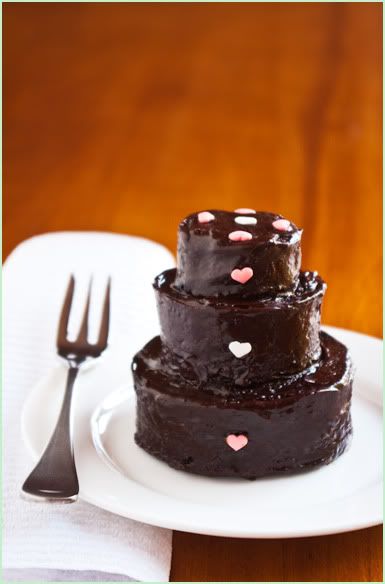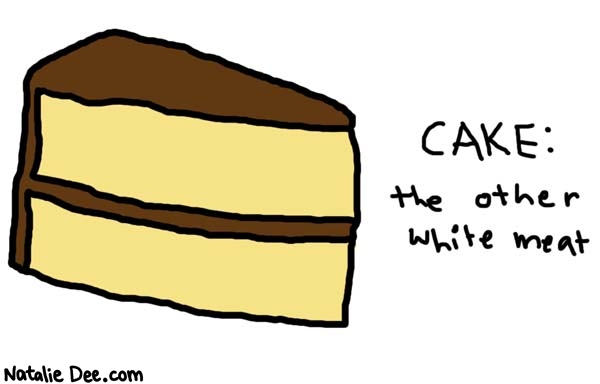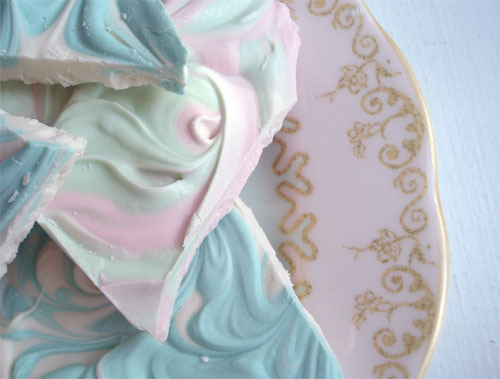It’s finally autumn, which means long hazy days are replaced with a bit more frantic activity and a sense of where on earth is the year going already? It also means the return of the football season*. And that means pies! Don’t you love the way a train of thought, however circuitous, always leads back to food?
This is what we’re here for – please bear with me while I finish waffling, because they’re quite delicious!
Pies can be messy. Serving slices of a large pie often means at least one slice that looks like it was dropped from a great height into a disorderly and not-very-appetising heap onto the plate. And eating a smaller pie can be a gravy-spattered reminder of the point when there ceases to be enough crunch pie crust to contain all that squishy filling and...
splat! There should be some obscure geometric ratio about the maximum area of a pie that can successfuly be contained by its circumference. Preferably with dodgy pi-related puns.
Things fall apart; the centre cannot hold**.
This is what we’re trying to fix...
Pies can also be difficult to photograph***. Which is my flimsy excuse for only sharing now the idea that I came up with prompted by the Culinary Smackdown hosted by
I'm A Pretend Chef back in February. Ah, the sound of deadlines as they
whoosh past!
The combination of a recent encounter with a recalcitrant and messy pie, and all those cake pops I keep seeing all over the interwebs, made me think about..
pie balls****. No collapsing slices. Small enough to avoid escaping filling. And with just the right amount of pastry to meat in every bite. They’re a bit like the carnivorous version of a doughnut hole (without the deep frying, though!).
I could imagine buying paper bags of steaming portable pies from carts at the football, within a little tub of tomato sauce for dipping (because a meat pie without sauce is just
wrong). More realistically, you could serve them in large bowls for easy-but-interesting casual party snacks. Or take them for packed lunches or picnics. And their handy size would make them great for little penguins, too (something unexpected and not too unfamiliar in the lunchbox could go down well).
If you’re keen to try out some portable pies, here’s how they’re made...
Sticky Penguin's Portable Pies
What you need
Pastry
400 g / 14 oz plain flour (it's actually 396.9 grams, but this isn't a recipe that calls for astonishing accuracy at any stage, so I went with rounding it. Just for anybody out there who does imperial/metric conversions in their head and thought it sounded off)
200 g / 7 oz butter (or butter blend / margarine works fine as well. Home-made shortcrust pastry is always preferable to bought, but I'm not going to start being all pastry-purist about things!)
Cold water (around 2-4 tbsp, preferably straight from the fridge)
Pie filling*****
1 onion, finely chopped
500 g lean minced beef
1 cup beef stock
(note: as this is adapted from an Australian recipe, cup measurements are metric. But, as the measurements are more a guide than an exact science, using US cups, or just sploshing things in till they look and taste about right, is just as good)
¼ cup tomato sauce / ketchup
2 tsp Worcester sauce
pepper to taste
½ tsp dried oregano
Pinch nutmeg
3 tbsp plain flour
¼ cup water
beaten egg for glazing
What to do
First, make the pastry – it can rest in the fridge while you cook the pie filling (Or, if you prefer not to rest your pastry, it might be quickest to start with the filling, and make the pastry while the meat bubbles away. Or I could just stop trying to tell you how to be efficient in the kitchen, which is probably just a wafflly nuisance!)
1. Rub the butter into the flour until the mixture resembles coarse breadcrumbs (it's ok to have a few tiny blobs of butter left, so don't worry about it being
perfectly even). Or pulse the flour and butter in a food processor until this texture is reached (which is generally quicker than I expect, so be wary of overdoing it!).
2. Add cold water, one tablespoon at a time, until the pastry can be shaped roughly into a ball. The dough shouldn't be too wet or sticky, so opt for the least amount of water that enables the pastry to come together.
3. Turn the dough out onto a large expanse of kitchen wrap / cling film, flatten the rough ball into a disc (around 2-3 cm / 1-1½ inches high), wrap the disc with the cling film and refrigerate for at least 30 minutes.
Then, make the filling
4. Cook the onion in a large pan until translucent. Add the mince and jab with a wooden spoon to break up the meat so no large lumps remain. Cook over medium heat, stirring occasionally, until the meat is browned.
5. Add the stock, tomato sauce, Worcester sauce, oregano, nutmeg and season to taste. Bring to the boil and simmer, covered, for around 15 minutes. Give it a stir every 5 minutes or so to make sure it doesn't stick to the bottom of the pan. Taste and adjust the sauces or seasonings if required.
6. Whisk the flour and water until smooth, add to the bubbling stew and stir in quickly and thoroughly with the wooden spoon, so no floury bits remain. Simmer for another 5 minutes, during which the mixture will thicken and reduce to a dollop-y consistency. Give it a bit longer if needed to get to that consistency. The mixture will firm a little more as it cools, but the gravy should be thick and rich rather than runny, to avoid squidgy pies.
7. Remove from the heat and allow to cool (at least to a temperature that you can comfortably poke a finger into) before assembling the pies. If you leave it to cool for longer, or make the filling in advance and refrigerate it, give it a good stir when you're ready to use it if it seems too thick.
To make the pies
8. Preheat oven to 200°C / 392°F.
9. Roll out the pastry to about 2 mm thick (it should be thick enough that the filling doesn’t burst out, but thin enough to not overwhelm the small size of the pies). I find rolling the pastry out on a sheet of greaseproof paper, with a lightly floured rolling pin,
avoids minimises both overly floury pastry and total chaos in the kitchen.
10. Cut circles from the pastry with a biscuit or scone cutter, or a glass lightly floured round the rim. I used a 6½ cm (2½ inch) cutter. I also found that "fluting" the edges of the circles with my fingers, so that it thinned out a little, made it easier to form the pie ball and avoid a lumpy join when bringing the edges together.
11. Add a dollop of pie filling to the centre of each circle. I used a small coffee scoop, around 1 rounded tablespoon in size, to get consistent amounts. Its shape also helped keep the pies roughly spherical. I also filled and assembled each pie ball as I went (rather than filling all of them, then assembling all of them) so that the moistness of the filling didn't make the pastry more fragile when handled.
12. Bring the edges of the circle together and crimp with your fingers to join firmly. Smooth the join as much as possible, then roll the pie ball lightly between the palms of your hands to re-shape it if it's flattened out a bit.
13. Place the pie balls, join side down, on a baking tray lined with a sheet of greaseproof paper. Brush the pies lightly with beaten egg.
14. Bake the pie balls for 10 minutes, then turn the oven down to 180°C / 356°F and bake until golden brown and crunchy (they take around 20-25 minutes in total). Allow to cool to avoid any mishaps with boiling pie filling - these have a habit of disappearing from the baking tray!
I was really pleased with how the pie balls turned out - they had a good ratio of pastry to filling, and were less messy (and much cuter!) than big pies. They reheated well, too. Now I'm thinking about what other recipes could do with a portable version...
* For some of us, that means AFL. For almost everybody else in the world, it probably means something else entirely!
** One of those quotes of uncertain provenance that seems to have been around forever. Apparently it comes from a Yeats poem, The Second Coming. And not originally from a sci-fi series much better avoided. Now I’m feeling half like Pioneer Woman for hunting down obscure references (I wonder if that’s what prompted her quizzes?), and half like an poorly-read and under-educated penguin. The ability of final year English classes at school to put me off poetry for fear of overanalysis and the need to discern murky layers of meaning in the manner of peeling an onion knows no bounds...
*** So can brownies. Why don’t I ever want to cook things that look pretty?
**** Not piebald. That’s for ponies. And it would just be wrong on
so many levels to eat one of those.
***** The original recipe for this pie filling was from an Australian Women's Weekly recipe for
Aussie Meat Pie. It's been adapted, first by the trifle-eating cat's mum, and then by me, to the version above.
Read more...
















































